#duchess Elisabeth Alexandrine of mecklenburg-schwerin
Explore tagged Tumblr posts
Text
𝙲𝚑𝚘𝚌𝚘𝚕𝚊𝚝𝚎 𝚌𝚊𝚛𝚍𝚜 𝚘𝚏 𝚁𝚘𝚢𝚊𝚕 𝚠𝚘𝚖𝚎𝚗 👑✨🍫
(𝙿𝚊𝚛𝚝 𝟹 𝚘𝚞𝚝 𝚘𝚏 𝟺)
~~~~~~~~~~~~~~~~~~~~~~~~~~~~~~~~~~~~~~~~~~~~~~~
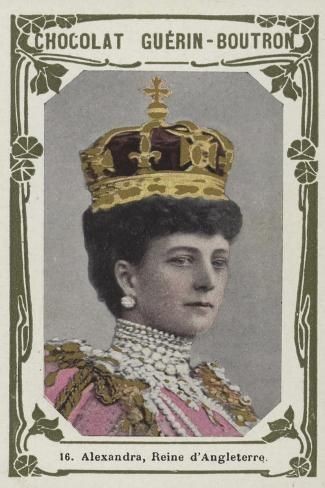
Queen Alexandra 𝚘𝚏 𝚝𝚑𝚎 𝚄𝚗𝚒𝚝𝚎𝚍 𝙺𝚒𝚗𝚐𝚍𝚘𝚖, née Princess Alexandra of Denmark.
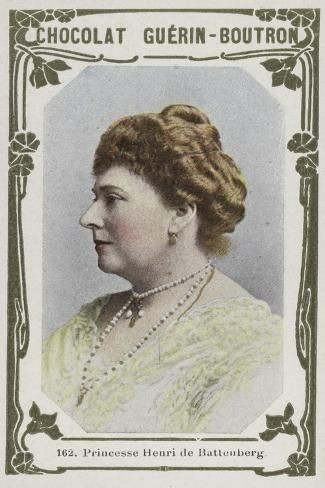
Princess Beatrice of Battenberg, née Princess Beatrice of the United Kingdom.
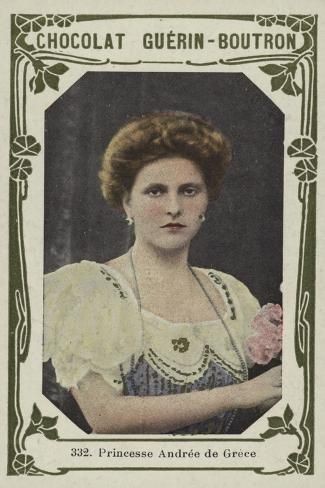
Princess Andrew of Greece and Denmark, née Princess Alice of Battenberg.
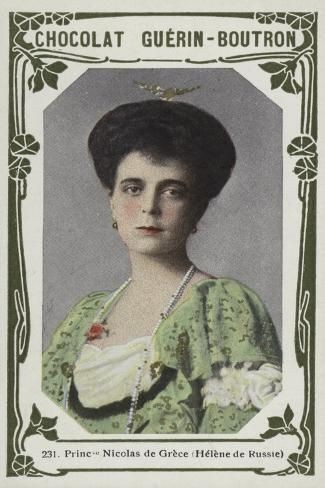
Princess Nicholas of Greece and Denmark, née Grand Duchess Elena Vladimirovna.
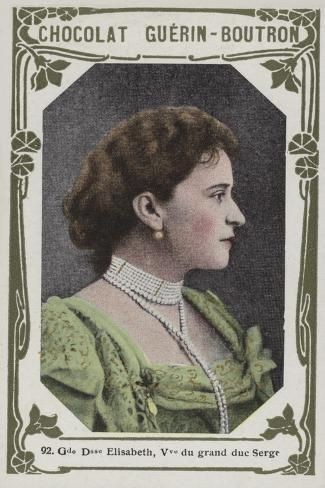
Grand Duchess Elisabeth Feodorovna, née Princess Elisabeth of Hesse.
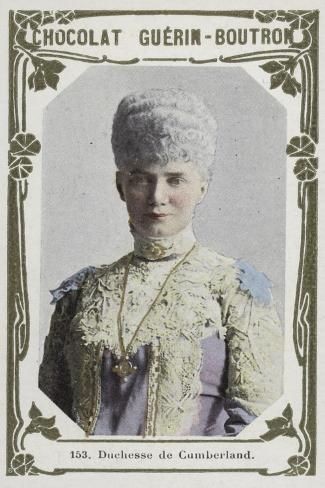
Crown Princess Thyra of Hanover, née Princess Thyra of Denmark.

Princess Olga of Hanover
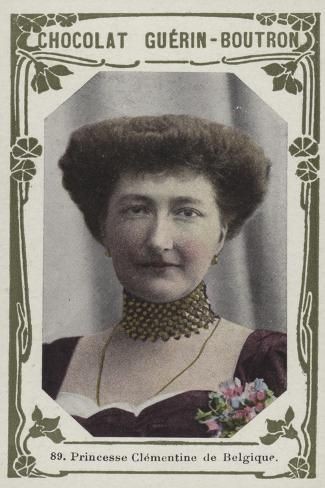
Princess Clementine of Belgium

Queen Alexandrine of Denmark, née Duchess Alexandrine of Mecklenburg-Schwerin.
#queen alexandra#alexandra of denmark#princess beatrice of battenberg#princess alice of battenberg#princess alice of greece and denmark#grand duchess elena vladimirovna#grand duchess elisabeth feodorovna#elisabeth of hesse#princess thyra of denmark#crown princess thyra of hanover#princess olga of hanover#princess clementine of belgium#queen alexandrine of denmark#alexandrine of mecklenburg-schwerin#chocolate cards
17 notes
·
View notes
Text

Friedrich Franz Michael IV, Grand Duke of Mecklenburg-Schwerin with his children: Friedrich Franz, Hereditary Grand Duke of Mecklenburg-Schwerin Duke Christian-Ludwig of Mecklenburg-Schwerin Duchess Thyra Anastasia Alexandrine Marie-Louise Olga Cecilie Charlotte Elisabeth Emma of Mecklenburg-Schwerin
German vintage postcard
#tarjeta#louise#postkaart#sepia#cecilie#christian-ludwig#friedrich#duke#duchess#michael#schwerin#carte postale#olga#hereditary#charlotte#ansichtskarte#children#grand#ludwig#german#briefkaart#mecklenburg#elisabeth emma#elisabeth#photo#photography#emma#postal#postkarte#alexandrine marie-louise olga cecilie
3 notes
·
View notes
Text

Anna Elisabeth Auguste Alexandrine, Duchess of Mecklenburg-Schwerin was half sister to Grand Duchess Marie Pavlovna of Russia (Grand Duchess Vladimir), cousin to Victoria, Ella, Irene and Alix of Hesse, and aunt to princess Cecilie of Mecklenburg-Schwerin (future crown princess of Prussia). Anna died when she was 16.
"My grandfather’s second marriage was terminated by the early death of the Grand Duchess, formerly Princess Anna of Hessen-Darmstadt, when her first child, a daughter, was born. Her daughter too died at an early age, when she was only sixteen ; she was worshipped in our family almost like a young saint".
The memoirs of the Crown Princess Cecilie
"...there was one daughter, Anna, who married the Grand Duke of Mecklenburg-Schwerin as his second wife, and died in childbirth. They had only one little girl, Annchen, who died at 16. This was a very delicate and nervous child. We used to play with her when she paid her yearly visit to my grandparents but we were so much more robust than she and so wild that my grandmother used always to forbid us exciting her".
"Recollections: The Memoirs of Victoria Marchioness of Milford Haven".
16 notes
·
View notes
Text
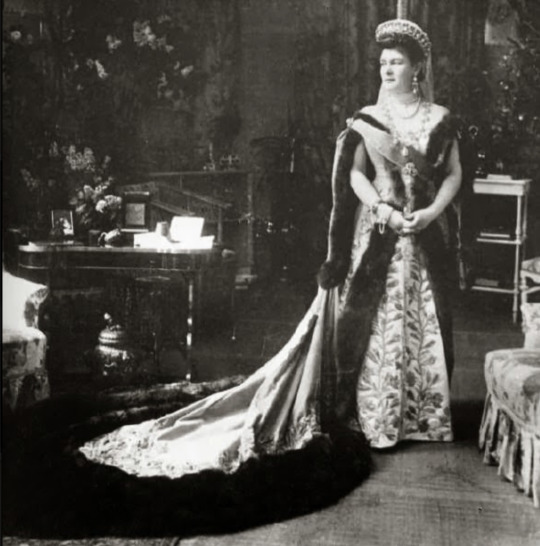
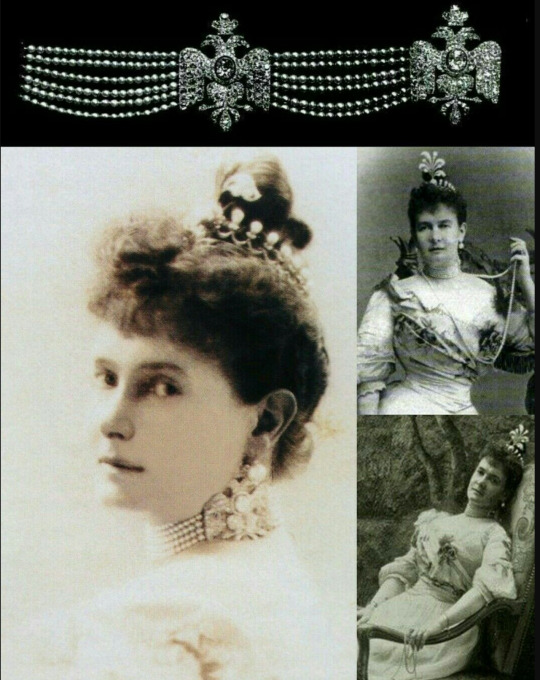
Grand Duchess Marie Pavlovna (the Elder) (1854–1920)
Marie Alexandrine Elisabeth Eleonore was born a Duchess of the Grand Ducal House of Mecklenburg to Frederick Francis II, Grand Duke of Mecklenburg-Schwerin - and his first wife, Princess Augusta Reuss of Köstritz (1822–1862)
She married Grand Duke Vladimir Alexandrovich, third son of Tzar Alexander II. She was distantly related to Tzar Pavel I and took the patronymic of "Pavlovna" to highlight this relationship. During the reign of Nicholas II, she was a prominent personage, incredibly rich and incredibly fond of jewelry.
She had great taste in jewels. Some of the most beautiful pieces owned by the British Royal Family today (such as the Vladimir Tiara) were made for her (or stones used in those pieces come from jewels originally made for her.)
Although Bolin was the official jeweler of the Russian Court during the time of Nicholas II and Faberge was also greatly esteemed...she developed a relationship with Cartier during her frequent visits to Paris...and became one of his first prominent Russian clients. The pearl choker, with platinum and diamonds, featured above, was one of the pieces he designed and made for her.
#Cartier#Grand Duchess Maria Pavlovna#Russian history#Imperial Russia#Romanov dynasty#Grand Duke Vladimir Alexandrovich
8 notes
·
View notes
Text

Duchess Elisabeth Alexandrine of Mecklenburg-Schwerin in 1892.
She was the youngest half-sister of Grand Duchess Maria Pavlovna "The Elder".
#duchess elisabeth alexandrine of mecklenburg-Schwerin#mecklenburg-Schwerin#german royalty#german royal#1892#1890s
16 notes
·
View notes
Text

#Duchess Woizlawa Feodora of Mecklenburg Schwerin#Duchess Woizlawa Feodora of Mecklenburg Schwerin#Duchess Elisabeth of Mecklenburg Schwerin#Queen Alexandrine#Duke Adolf Friedrich of Mecklenburg Schwerin#crown princess cecilie of prussia#queen ingrid of denmark#King Frederik IX#Duchess Thyra of Mecklenburg Schwerin
2 notes
·
View notes
Photo

Alexandrine of Prussia, Duchess William of Mecklenburg-Schwerin (1 February 1842 - 26 March 1906)
#alexandrine of prussia#friederike wilhelmina luise elisabeth alexandrine#duchess william of mecklenburg-schwerin#daughter of prince albert of prussia#wife of duke william of mecklenburg-schwerin#history#women in history#19th century#20th century#vintage#antique
5 notes
·
View notes
Text

Grand Duchess Maria Pavlovna Romanova of Russia (the Elder) in court dress.
Born Duchess Marie Alexandrine Elisabeth Eleonore of Mecklenburg-Schwerin on 2 May 1854 (14 May 1854 N.S.) — 6 September 1920,as the eldest daughter of Grand Duke Friedrich Franz II of Mecklenburg-Schwerin by his first wife, Princess Augusta Reuss of Köstritz.
Marie married Grand Duke Vladimir Alexandrovich Romanov of Russia, the third son of Tsar Alexander II of Russia. Marie and Vladimir married on 28 August 1874. The wedding took place in the chapel of the Winter Palace,St Petersburg.
They had five children who were the paternal first cousins to Tsar Nicholas ll of Russia.
•Grand Duke Alexander Vladimirovich of Russia (31 August 1875 – 16 March 1877)
•Grand Duke Kirill Vladimirovich of Russia (12 October 1876 – 12 October 1938)
•Grand Duke Boris Vladimirovich of Russia (24 November 1877 – 9 November 1943)
•Grand Duke Andrei Vladimirovich of Russia (14 May 1879 – 30 October 1956)
•Grand Duchess Elena Vladimirovna of Russia (17 January 1882 – 13 March 1957); married Prince Nicolaus of Greece and Denmark.
16 notes
·
View notes
Photo










Royal Birthdays for today, December 24th:
Galba, Roman Emperor, 3 B.C.
John, King of England, 1166
Constance of Austria, Queen of Poland, 1588
Honoré II, Prince of Monaco, 1597
Mariana of Austria, Queen of Spain, 1635
Selim III, Ottoman Sultan, 1761
Elena Pavlovna, Hereditary Grand Duchess of Mecklenburg-Schwerin, 1784
Elisabeth, Empress of Austria, 1837
Cristina, Princess of Bourbon-Two Sicilies, 1869
Alexandrine of Mecklenburg-Schwerin, Queen of Denmark, 1879
#king john#elisabeth of bavaria#mariana of austria#constance of austria#selim iii#galba#honore ii#elena pavlovna#cristina of bourbon two sicilies#Alexandrine of Mecklenburg-Schwerin#long live the queue#royal birthdays
51 notes
·
View notes
Text
when: narrative
A brief overview of the history of Mecklenburg, from 1890 to 2006.
Means the person is a sole creation of me.
Means the person is non-fictional and important to the history of the family.

Heinrich Ludwig I, King of Mecklenburg, (born 26 January 1890) only child of Duke Johann Albrecht of Mecklenburg-Schwerin and Princess Elisabeth Sybille of Saxe-Weimar-Eisenach.
Princess Elisabeth Sybille died in 1908 when Heinrich Ludwig was eighteen years old. His mother was first cousin to Queen Wilhelmina of the Netherlands, making Wilhelmina his maternal first cousin once removed. Wilhelmina married Heinrich Ludwig’s paternal half-uncle, Duke Heinrich of Mecklenburg-Schwerin, making Queen Juliana of the Netherlands his half-paternal first cousin and his maternal second cousin. The events of WWII solidified the bonds between the House of Mecklenburg and the House of Orange.
Heinrich Ludwig’s father remarried in 1909 to Princess Elisabeth of Stolberg-Rossla, they would have no children and Heinrich Ludwig remained an only child.
Heinrich Ludwig’s father had been the regent for his nephew, Friedrich Franz IV, Grand Duke of Mecklenburg-Schwerin, from 1897 to 1901.
In 1915, aged twenty-five, Heinrich Ludwig, who was fourth in line to inherit the throne, overthrew his cousin, Friedrich Franz IV, along with the support of several family members due to Mecklenburg’s involvement in WWI. Grand Duke Friedrich Franz IV abdicated on 3 November 1915 and renounced the succession rights of his two sons. Heinrich Ludwig’s father also renounced his succession rights, this time in favour of his son, who then became the Grand Duke of Mecklenburg-Schwerin. Heinrich Ludwig recalled his troops and reinforced the border with Prussia. Mecklenburg effectively changed sides and begun supplying Entente troops (with little effect but the gesture was appreciated).
In early 1918, the Grand Duke of Mecklenburg-Strelitz committed suicide and Heinrich Ludwig took control of the grand duchy as the current heir was serving in the Russian Army and would later renounce his claim to the throne (the only surviving male-line was of morganatic descent and ineligible to inherit at the time).
When the German Empire and her allies lost the war in November 1918, Mecklenburg-Schwerin and Mecklenburg-Strelitz celebrated their victory.
Heinrich Ludwig had fallen for the young Princess Karola of Urach prior to the outbreak of WWI and intended to marry her. She was a member of a morganatic branch of the Royal House of Württemberg, but her mother had been a Duchess in Bavaria and Heinrich Ludwig deemed this royal connection to be strong enough to overcome the fact that her immediate family did not rule over a country.
Princess Karola was born Catholic and remained a Catholic for the rest of her life. Karola and Heinrich Ludwig married on 2 January 1919.
In the Treaty of Versailles of 1919, the Grand Duchies of Mecklenburg-Schwerin and Mecklenburg-Strelitz were joined to create the Kingdom of Mecklenburg. Heinrich Ludwig was now King and Karola his Queen.
The King and Queen now needed an heir, or several. The other men in the family had only daughters and women were not able to inherit.
A son and Crown Prince, Paul Friedrich, was born 10 September 1919, nine months after his parents wedding. A daughter, Marie Elisabeth, was born on 1 November 1921. There would be no further children.
Heinrich Ludwig and his family were popular. They were accommodating to the former Grand Ducal Family, allowing them to remain in their palaces for life, with the intention of inheriting the lands after their deaths. Instead of using Schweriner Schloss or Schloss Ludwigslust as his residence, Heinrich Ludwig had built a grand palace between Bad Doberan and Rostock, having moved the country’s capital to Rostock. He named the palace Euphemiasburg, after his ancestress Euphemia of Sweden.
Mecklenburg flourished in the years between WWI and WWII, they had not been sanctioned as the rest of the former German Empire had been and despite the troubles brought on by the Great Depression, became a minor power in Europe and an important member of central Europe, enjoying close ties with her neighbours and Baltic friends, especially Denmark and Poland.
However, there were groups of people, including governments of foreign countries who were uncomfortable with the existence of the Kingdom of Mecklenburg and her powerful King. Mecklenburg was a constitutional monarchy and had been since 1916, but Heinrich Ludwig I owned half the country as his personal property, had considerable executive powers and used them frequently to intercede with government affairs as an executive monarch and de facto upper house of government.
There were also calls for Mecklenburg to reunite with Germany. This notion became more popular after the rise of the Nazi Party, which attracted a considerable following in Mecklenburg from the early 1930s.
On 1 June 1938, the German Ambassador to Mecklenburg sent word to the King that Germany was mobilising its troops and that Mecklenburg would be occupied by morning on 2 June. The King had his children evacuate to Denmark where the former Grand Duke’s sister was Queen Consort. The former Grand Duke’s eldest daughter, Duchess Thyra of Mecklenburg-Schwerin, joined her second cousins in Denmark as she and Paul Friedrich were courting and did not want to be parted.
King Heinrich Ludwig I decided to remain in Mecklenburg to dissuade his cousin the former Grand Duke and his cousins’ sons from seeking the throne of Mecklenburg, or from being used as a puppet by Nazi Germany.
The Kingdom would be occupied by Nazi Germany for nearly seven years. The King and Queen were moved from Euphemiasburg to Schweriner Schloss and lived with the former Grand Duke and Duchess during the occupation. The King’s Government was able to function normally until 1940 when Mecklenburg was officially annexed by Nazi Germany. The country’s capital was moved back to Schwerin in 1940 where it remains to this day.
The former Grand Duke’s eldest son had joined the SS in 1931, and would be among those occupying Denmark from 1940 and disowned in 1943. The former Grand Duke’s second son and youngest daughter remained in Mecklenburg for the duration of the war.
When Great Britain declared war on Germany on 1 September 1939, Paul Friedrich, his sister Marie Elisabeth and Duchess Thyra fled to London as they feared that continental Europe was no longer safe. They remained in England for the rest of the war.
Paul Friedrich and Thyra were married at Windsor Castle on 2 October 1939. King George VI, Queen Elizabeth, Princess Elizabeth and Princess Margaret were among the guests.
Crown Princess Thyra would give birth to three daughters, also at Windsor Castle, Heinrike Franziska, on 4 June 1940, Elisabeth Mathilde, on 23 January 1942 and Marie Anastasia, on 12 October 1944.
King Heinrich Ludwig and Queen Karola learnt of their ever growing family through weekly BBC broadcasts given by their only son. King Heinrich Ludwig, faced with the possibility that he and his wife would not survive the German occupation, issued a royal decree changing the laws of succession to allow women to inherit the throne by male-preference primogeniture. In addition to this, he granted his children and grandchildren nominal dukedoms in the same way Sweden granted royal dukedoms.
From 1940 to 1945, the line of succession was:
Crown Prince Paul Friedrich, Duke of Rostock, son of King Heinrich Ludwig I
Princess Heinrike Franziska, Duchess of Ratzeburg, first daughter of the Crown Prince
Princess Elisabeth Mathilde, Duchess of Güstrow, second daughter of the Crown Prince
Princess Marie Anastasia, Duchess of Grevesmühlen, third daughter of the Crown Prince
Princess Marie Elisabeth, Duchess of Parchim, daughter of King Heinrich Ludwig I
The strong bond formed between the House of Mecklenburg and the House of Windsor during the War, and the Blitz especially, continues to this day.
After the defeat and surrender of the German forces in early May 1945, Crown Prince Paul Friedrich, Crown Princess Thyra and their children, and Princess Marie Elisabeth returned to Mecklenburg in late May, only days before Heinrike Franziska’s fifth birthday.
The King and Queen were overjoyed to see their children again and meet their grandchildren for the first time. The House of Mecklenburg had survived the war relatively unscathed.
Mecklenburg, however, did not. When the Red Army advanced through central Europe, Mecklenburg grew nervous, worried that they would be left behind by the Allies. However, some of their Baltic ports were deemed important enough to the UK, USA, and France to stand up to Russia and approximately 40% of Mecklenburg was lost to the Soviets in 1945 and the Kingdom would remain split in two until 1990.
The former Grand Duke, Friedrich Franz IV died on 17 November 1945. Heinrich Ludwig and Karola took possession of Schweriner Schloss as their pre-occupation home Euphemiasburg was now only miles from the Eastern German border. The former Grand Duchess took up residence at Schloss Ludwigslust, where she would remain until her death in 1963. She lived to see her son-in-law ascend the throne and for her eldest daughter to become Queen Consort.
Crown Prince Paul Friedrich and Crown Princess Thyra would have several more children.
Another daughter, Cecilie Auguste, Duchess of Ludwigslust, was born on 23 September 1947.
A son, Wilhelm Franz, Duke of Schwerin, was born on 17 July 1949, and was now second in line to inherit the throne after his father.
A fifth daughter, Alexandrine Luise, Duchess of Waren, was born on 18 March 1951.
A second son, Albrecht Gustav, Duke of Bad Doberan, was born on 7 October 1953.
In 1949, the King and Queen’s only daughter, Marie Elisabeth married Prince Gorm of Denmark, a grandson of Christian IX of Denmark, and they would have two children Harald, in 1953 and Feodora in 1955.
The first King of Mecklenburg died on 18 November 1954. His son ascended the throne as Paul Friedrich II of Mecklenburg with Thyra as his Queen Consort.
The new King and Queen would have one final child, Ingrid Sophie, Duchess of Teterow, born on 9 June 1955.
The new King and Queen were coronated at Schwerin Cathedral in 1956.
In 1956, the line of succession was:
Crown Prince Wilhelm Franz, Duke of Schwerin, first son of King Paul Friedrich II
Prince Albrecht Gustav, Duke of Bad Doberan, second son of King Paul Friedrich II
Princess Heinrike Franziska, Duchess of Ratzeburg, first daughter of King Paul Friedrich II
Princess Elisabeth Mathilde, Duchess of Güstrow, second daughter of King Paul Friedrich II
Princess Marie Anastasia, Duchess of Grevesmühlen, third daughter of King Paul Friedrich II
Princess Cecilie Auguste, Duchess of Ludwigslust, fourth daughter of King Paul Friedrich II
Princess Alexandrine Luise, Duchess of Waren, fifth daughter of King Paul Friedrich II
Princess Ingrid Sophie, Duchess of Teterow, sixth daughter of King Paul Friedrich II
Princess Marie Elisabeth, Duchess of Parchim, daughter of late King Heinrich Ludwig I
Prince Harald of Denmark, son of Princess Marie Elisabeth
Princess Feodora of Denmark, daughter of Princess Marie Elisabeth
The line of succession was well secured, and the royal family’s standing within Mecklenburg would be credited with maintaining the stability of the small Kingdom.
The King and Queen enjoyed enormous popularity and a very happy home life. According to the rules of succession, their children were only allowed to marry people from royal or noble families and from the early 1970s, their daughters began marrying foreign born princes and having children of their own.
Queen Karola outlived her husband by several years and was able to see several of her great-grandchildren born before she died in 1980, aged 83.
Unknown to the family at the time, but 1980 was the beginning of several years of loss and difficulty for the family.
Queen Thyra died suddenly on 27 September 1981 following a severe heart attack. The country, still reeling from the death of their beloved Karola, was plunged into mourning once more. King Paul Friedrich II was beside himself with grief and the trouble concerning his youngest son wasn’t doing his health any favours.
In 1981, the Crown Prince, now 32 years old, was still unmarried and his younger brother, Albrecht Gustav, had set his sights on Veronica Doncaster, an American born commoner with Mecklenburgish ancestry. The King disapproved and refused to declare such a marriage dynastic or relax the rules regarding the line of succession. If Albrecht Gustav and Veronica were to marry, the Prince would lose his place in the line of succession for himself and his descendants, and any children would not be able to inherit the many titles used by the Royal House of Mecklenburg.
King Paul Friedrich II of Mecklenburg died 12 January 1982, outliving his wife by only a few months.
His eldest son ascended the throne as King Wilhelm Franz I of Mecklenburg. Albrecht Gustav was now his brother’s heir presumptive.
Wilhelm Franz did not have any problem with members of his family marrying commoners and changed the rules of succession and the house rules to allow unequal marriages. Albrecht Gustav and Veronica were married at Schwerin Cathedral on 29 August 1982. Veronica became a Princess of Mecklenburg and Duchess of Bad Doberan. The public, who had been supportive of their prince marrying a commoner, were thrilled and hundreds of thousands of people lined the streets of Schwerin to celebrate the wedding.
Albrecht Gustav and Veronica became parents on 27 May 1983, when a son, Paul Ludwig was born. They would have another child, Marie Leopoldine, born 3 February 1985, before moving to Canada in August 1985 to serve as Mecklenburg’s Ambassador to Canada. A further two children would be born while living in Canada, Christian Franz, born 7 March 1987 and Marie Josefine, born 27 January 1989.
In 1981, at the wedding of his cousin Prince Harald of Denmark to Duchess Helene of Oldenburg, King Wilhelm Franz I met the bride’s cousin, Princess Eleonora of Leiningen. Eleonora, born 12 May 1961, was almost thirteen years younger than the King, but they began a relationship in late 1981 and became engaged in 1984. When the couple were married in October 1985, the small Kingdom hosted a celebration like none they had seen in decades.
The new Queen settled into her role, supporting her husband and charitable causes in the years leading up to the collapse of the Soviet Union.
The King and Queen welcomed their first child, Karolina Augusta, Duchess of Elde, on 15 September 1988. From the young princess’s birth there was rumblings of changing the laws of succession to allow the eldest child to inherit regardless of gender.
On 15 September 1989, Karolina Augusta’s first birthday, the King granted his daughter the title Duchess of Rostock (a title previously held by her grandfather, King Paul Friedrich II) and announced his intention to change the laws of succession from 1 January 1990 among his descendants to absolute primogeniture and thus his daughter would become Crown Princess and the heiress apparent.
So, on 1 January 1990, King Wilhelm Franz I issued a royal decree changing the laws of succession and his daughter became the Crown Princess of Mecklenburg and the first heiress apparent in the country’s almost 900 year history.
Following the fall of the Soviet Union, the former lands of Mecklenburg were reunited and a referendum held on 14 October 1990 led to the incorporation of the lands of Vorpommern, almost doubling the size of the Kingdom of Mecklenburg. On 15 October, King Wilhelm Franz I announced that to honour Vorpommern he had changed his eldest daughter’s surname from von und zu Mecklenburg to von und zu Mecklenburg-Vorpommern. Karolina Augusta was now the head and founder of the House of Mecklenburg-Vorpommern, designated as a branch of the House of Mecklenburg.
From late 1990, the King and Queen started the long and arduous task of rebuilding their nation and welcoming their new subjects into a thoroughly western nation after decades of Soviet rule.
During an annual ski holiday to Switzerland, the King died following a skiing accident on 20 January 1992. Wilhelm Franz was only forty-two years old and had reigned for just over ten years.
His only child ascended the throne as Queen Karolina Augusta I of Mecklenburg. She was three and a half years old.
Queen Eleonora, who was seven months pregnant, was declared regent on 21 January 1992 by the Council of the Royal House and Family of Mecklenburg. The late King’s younger brother, Albrecht Gustav, who had been serving as the Mecklenburgish Ambassador to Canada, attempted to have himself declared regent, but was unsuccessful. Albrecht Gustav became resentful and refused to return to Mecklenburg once his term as Ambassador to Canada finished in 1993.
Queen Eleonora, now aged thirty-one, gave birth to a son, Klaus Wilhelm, Duke of Havel, on 12 March 1992.
The regency would last over fourteen years, until Karolina Augusta turned eighteen on 15 September 2006.
The rules regarding the line of succession where changed further in late 2006, to overturn the rule only allowing Protestants. This allowed the Catholic children of Princess Feodora into the line of succession.
The line of succession was now:
Prince Klaus Wilhelm, Duke of Havel
Prince Albrecht Gustav, Duke of Bad Doberan
Prince Paul Ludwig of Mecklenburg
Prince Christian Franz of Mecklenburg
Princess Marie Leopoldine of Mecklenburg
Princess Marie Josefine of Mecklenburg
Princess Heinrike Franziska, Duchess of Ratzeburg
Princess Elisabeth Mathilde, Duchess of Güstrow
Prince Ludwig of Hohenlohe-Langenburg
Princess Juliana of Hohenlohe-Langenburg
Princess Lucinda of Hohenlohe-Langenburg
Prince Konstantin of Hohenlohe-Langenburg
Princess Marie Anastasia, Duchess of Grevesmühlen
Prince Karl Viktor of Hesse-Kassel
Prince Otto of Hesse-Kassel
Prince Ernst Albert of Hesse-Kassel
Prince Nikolaus Emmanuel of Hesse-Kassel
Princess Cecilie Auguste, Duchess of Ludwigslust
Prince Friedrich Magnus of Schwarzburg
Princess Anne Therese of Schwarzburg
Princess Alexandrine Luise, Duchess of Waren
Princess Ingeborg of Schleswig-Holstein-Sonderburg-Glücksburg
Princess Sigrid of Schleswig-Holstein-Sonderburg-Glücksburg
Princess Ingrid Sophie, Duchess of Teterow
Princess Marie Elisabeth, Duchess of Parchim
Prince Harald of Denmark
Prince Oskar of Denmark
Prince Axel of Denmark
Princess Louisa of Denmark
Princess Feodora of Liechtenstein
Prince Adam Karl of Liechtenstein
Prince Peter Gregor of Liechtenstein
Princess Bernadette Sophia of Liechtenstein
Princess Johanna Eleonore of Liechtenstein
6 notes
·
View notes
Text
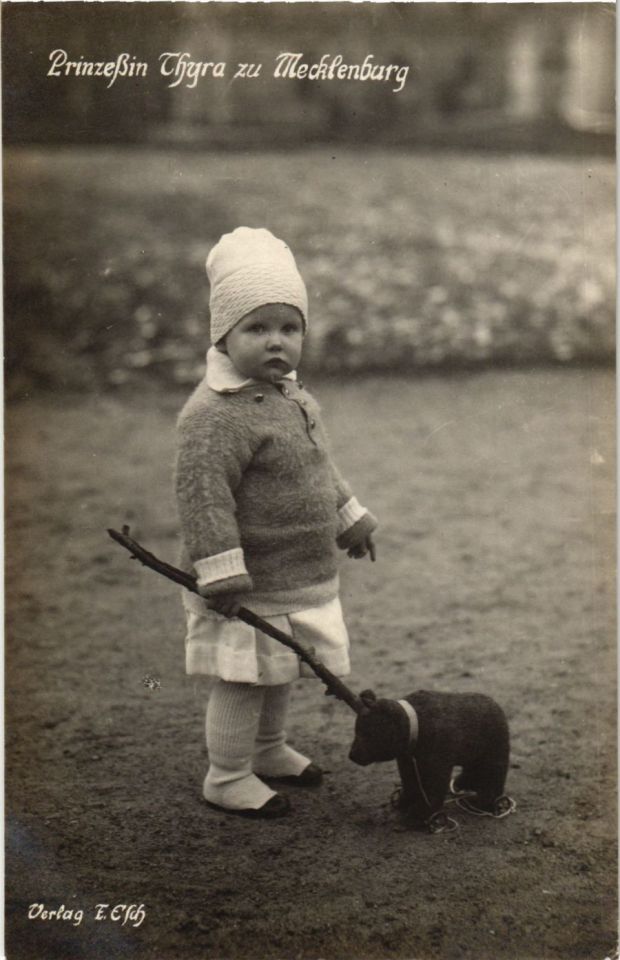
Duchess Thyra Anastasia Alexandrine Marie-Louise Olga Cecilie Charlotte Elisabeth Emma of Mecklenburg-Schwerin
German vintage postcard
#alexandrine marie-louise olga cecilie#tarjeta#postkaart#elisabeth emma#german#elisabeth#sepia#cecilie#historic#duchess#photo#mecklenburg#postal#briefkaart#emma#photography#anastasia#alexandrine#vintage#ephemera#ansichtskarte#charlotte#old#thyra#postcard#marie#louise#postkarte#schwerin#olga
4 notes
·
View notes
Text

Duchess Elisabeth Alexandrine of Mecklenburg-Schwerin (1869-1955), later Grand Duchess of Oldenburg, in 1875.
She was a younger half-sister of Grand Duchess Maria Pavlovna "The Elder" and paternal aunt to Queen Juliana of the Netherlands.
Source: Hessisches Staatsarchiv Darmstadt.
#duchess elisabeth alexandrine of mecklenburg-schwerin#mecklenburg-schwerin#german royalty#german royal#1875#1870s
15 notes
·
View notes
Text

Newlywed Grand Duchess Elisabeth Alexandrine of Oldenburg née Duchess of Mecklenburg-Schwerin (1869-1955). 1896.
She was Princess Sophie Charlotte's of Prussia stepmother, Hereditary Grand Duke Nicholas' of Oldenburg mother, Grand Duchess Maria Pavlovna's half-sister and a paternal aunt of Queen Juliana of The Netherlands.
Photograph by E. Bieber
Source: German Archives
#Duchess Elisabeth Alexandrine of Mecklenburg-Schwerin#Grand duchess Elisabeth Alexandrine of Oldenburg#Oldenburg#Mecklenburg-Schwerin#german romanticism#german royal#german royalty#germany#1896#1890s fashion#1890s
28 notes
·
View notes
Text

Grand Duke Frederick Francis II of Mecklenburg-Schwerin's children from his third marriage to Princess Marie of Schwarzburg-Rudolstadt. 1890s.
From left to right: Duke Friedrich William (1871-1897), Duke Henry (1876-1934), Duchess Elisabeth Alexandrine (1869-1955) and Duke Adolf Friedrich of Mecklenburg-Schwerin (1873-1969).
"In a storm on the morning of September 22, 1897, the torpedo boat S 26 capsized on the way home from an exercise by the torpedo boat division in the Elbe estuary near Cuxhaven, at approximately the height of the lightship Elbe 1.
The S 26 torpedo boat was caught aft by a sea approaching behind, then thrown sideways and capsized. Immediately after the accident, the division boat D 3 of Captain Schaefer tried unsuccessfully to tow the capsized boat. The rescue operation failed due to the steadily increasing swell. With the keel up, the boat swam about an hour before the stern straightened and then sank. Friedrich Wilhelm and seven of his crew drowned, some of them trapped in the false deck. Eight crew members survived and were recovered. They probably only survived because their commander had ordered the wearing of life jackets early on after the loss of the torpedo sailor Schwabrowski from S 27".
Source: internet
#princess marie of Schwarzburg-Rudolstadt#Duchess Elisabeth Alexandrine of mecklenburg-schwerin#duke friedrich wilhelm of Mecklenburg-Schwerin#Duke adolf friedrich of mecklenburg-schwerin#Duke henry of mecklenburg-schwerin#mecklenburg-schwerin#german royal#german royalty#1890s#prince consort henry of the netherlands
22 notes
·
View notes
Text

Some members of The Royal Family of Mecklenburg-Schwerin.
Back row: Duke Henry of Mecklenburg-Schwerin, Duchess Elisabeth Alexandrine of Mecklenburg-Schwerin, unknown officers.
Front row: Duke Adolf Friedrich of Mecklenburg-Schwerin, Grand Duchess Marie of Mecklenburg-Schwerin, unknown woman.
Early 1890s.
Source: pinterest
Duke Henry would later marry Queen Wilhelmina of The Netherlands and produce a daughter, Queen Juliana of The Netherlands.
#Grand Duchess marie of Mecklenburg-Schwerin#Dowager grand marie of Mecklenburg-Schwerin#princess marie of schwarzburg-rudolstadt#duchess Elisabeth Alexandrine of mecklenburg-schwerin#Grand Duchess Elisabeth alexandrine of Oldenburg#Duke henry of mecklenburg-schwerin#Duke adolf Friedrich of Mecklenburg-Schwerin#mecklenburg-schwerin#schwarzburg-rudolstadt#german royal#german royalty#germany#dutch#dutch Royal family#dutch Royal#dutch royalty#the Netherlands#1890s#1890s fashion#early 1890s#prince consort henry of the netherlands
15 notes
·
View notes
Text

The Dowager Grand Duchess of Mecklenburg-Schwerin née Princess of Schwarzburg-Rudolstadt (1850-1922) with her two eldest children, Duchess Elisabeth Alexandrine (1869-1955) and Duke Friedrich Wilhelm (1871-1897). 1893.
Marie was Grand Duchess Maria Pavlovna's stepmother and Queen Juliana's paternal grandmother through her youngest son, Prince Heinrich ( Prince Consort to Queen Wilhelmina of The Netherlands).
Source: pinterest
#grand duchess marie of mecklenburg-schwerin#dowager grand Duchess marie of Mecklenburg-Schwerin#princess marie of Schwarzburg-Rudolstadt#Duchess Elisabeth alexandrine of Mecklenburg-Schwerin#grand duchess Elisabeth alexandrine of Oldenburg#Duke friedrich wilhelm of mecklenburg-schwerin#mecklenburg-schwerin#Schwarzburg-Rudolstadt#german romanticism#german royal#german royalty#germany#1890s#1890s fashion#1893#family
16 notes
·
View notes